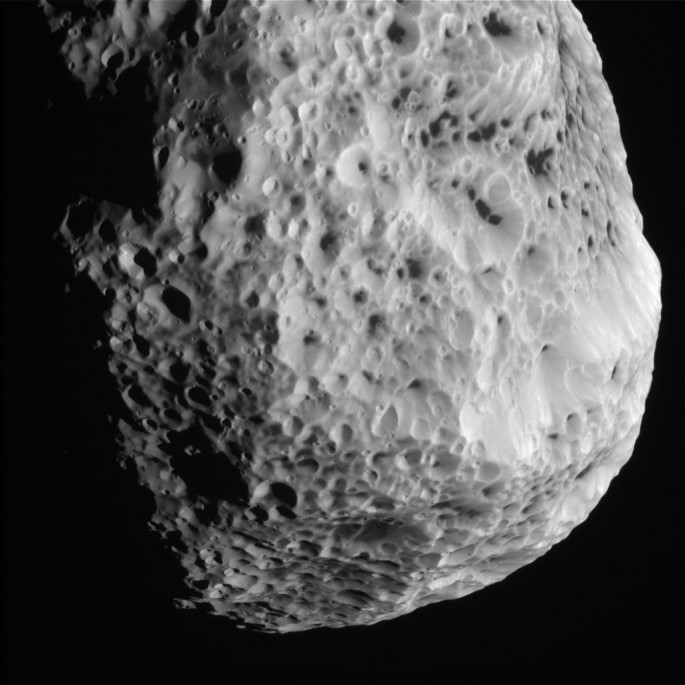The NASA and European Space Agency's Cassini probe finally made its last, final approach on Saturn's moon, Hyperion on May 31, Sunday. Mission controllers are now preparing the spacecraft for its last leg of its mission where scientists will now maximize the remaining life of the probe.
Hyperion is one of the smaller moons of Saturn where it only measures an average radius of 82 miles. This will be the last series of images from Cassini of Hyperion.
This moon became a point of interest for astronomers since they believe it possesses a porous interior and sponge like texture on its surface unlike any other natural satellites seen in the solar system.
During its orbit around gas giant Saturn, this moon follows an erratic orbital trajectory. However, when the Cassini spacecraft flies around Hyperion, the same side of the moon has been facing the spacecraft. This is also relative since it is almost impossible to determine which side of the moon will be facing the spacecraft during a scheduled approach.
Although this is not the first time that the probe will be approaching the spongy moon, its closest flyby occurred on September 26, 2005 when the spacecraft was about 323 miles from the surface of the moon. However, some six minutes before this approach, the probe was hit by an electrical current from Hyperion at 200 volts when it was 1,200 miles away.
After this strange phenomenon, the mission team released a short video of the moon as Cassini conducted its closest flyby. Hyperion appears to present a smiley face from its geological features.
Apart from Hyperion, Dione which is another moon of Saturn will be explored by Cassini on June 16 where its closest approach will be just 321 miles from the moon. Another moon will also be visited by the spacecraft which is Enceladus from a really close range of 30 miles from its surface, scheduled in October.
During the later part of this year, after completing its missions, Cassini will then depart from the equatorial plane of Saturn where most of the moons orbit and will prepare for its final end of its journey.
When Cassini enters this last stage of its mission, the probe will conduct a series of dives around Saturn and its innermost ring, marking this as the spacecraft's last, dazzling plunge. Cassini will then capture the last images of Saturn's spectacular ring system from an unprecedented, never before seen view.



























